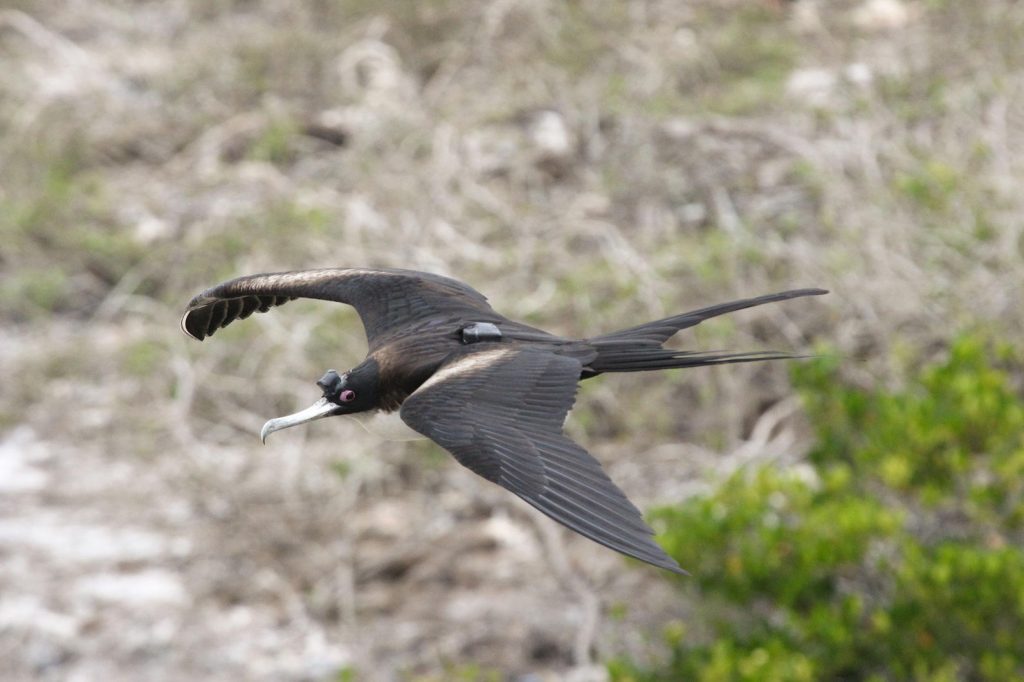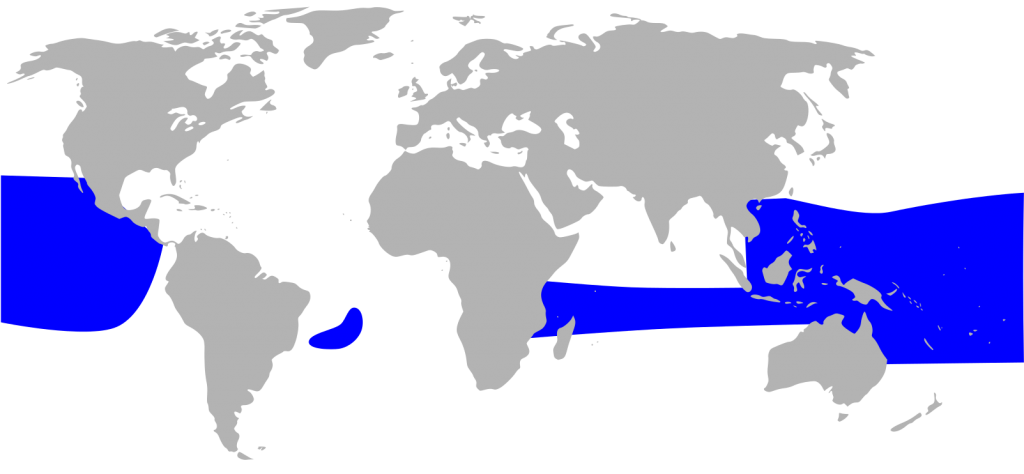Let’s Fly in Our Sleep

Seabirds live in a marine environment, typically feasting on fish that get too close to the surface. The great frigatebird, pictured above, is one such species of seabird. And like other seabirds, its love of the water ends after a meal or two — the great frigatebird can’t swim. In the unfortunate event that it flies into the water and can’t get out, it will, ultimately, drown.
For years, that’s caused an interesting conundrum for researchers. The map below helps explain why: it shows where great frigatebirds can be found. What you’ll see is that they cover a huge area — and almost all of it is over water.

To go from shore to shore over such large areas, well, that’s a long flight. Some migratory flights can take weeks and even up to two months, and often those flights are entirely over the open seas. The question: If the birds are over water for that long, when — and where — are they sleeping?
For years, the theory was that frigatebirds slept, somehow, mid-flight. But until recently, that was, at best, a guess. In 2016, though, a paper in Nature Communications finally provided evidence that the theory was right. Take a closer look at the image above, which comes via this article from the Audobon Society’s magazine. You’ll see a shiny black bump in the middle of its back, positioned between its wings, and another black device on the equivalent of its forehead. Those items, combined, allowed researchers to measure the brain activity and the velocity of the monitored birds. Per that Audobon article, here’s what they found:
Rattenborg [the lead reseracher] and his team found it relatively easy to capture 15 of the birds to implant electroencephalographs (EEGs) into their skulls. Because EEGs measure electrical activity in the brain, the researchers were able to tell when the birds were awake or asleep. An implanted accelerometer clued them into how fast and in what direction the animals flew.
When they downloaded the data from the tiny devices a week later, the researchers found that while frigatebirds do sleep while flying, they sleep very little—about 45 minutes each day in short ten-second bursts, usually after dark.
The sleep isn’t quite the quality of the on-land sleep; per the Guardian, “in-flight sleep was also far less intense than sleep on land; the birds sacrifice sleep for vigilance, and incur a large sleep ‘debt’ during long distance flights, which they may compensate for once back on land,” sleeping as much as 12 hours at a time. So if you’re envious of their sleep-flying, don’t be — it catches up with them at the end. Then again, who wouldn’t want to fly in their sleep?
Bonus fact: It wasn’t originally obvious that birds migrated over long distances — many other explanations for why birds disappeared in one place and appeared in another also popped up, and many of those explanations bordered on the supernatural. In 1822, the science community got its first evidence that migration, not some odd hocus pocus, was responsible. Atlas Obscura explains: “[a] white stork, shot [in Europe], was discovered with an 80 cm long Central African spear embedded in its neck. The stork had flown the entire migratory journey from its equatorial wintering grounds in this impaled state.” Researchers of the day concluded, correctly, that the most likely solution was that the bird had flown northward from Central Africa, which is to say that it migrated.
From the Archives: Sleeping Beauty Syndrome: Meet the people who sleep away almost the entire day.
